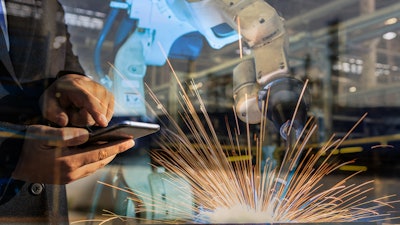
There’s no debating the potential for value creation as a result of factory digitization, which could top $3.7 trillion in 2025, and provide digitally-savvy companies 38 percent higher revenue growth than those that have not yet digitized the business. Additionally, according to Gartner, 67 percent of business leaders admit their company must become much more digitized immediately, in order to remain competitive.
While there’s plenty of incentive, there are also a myriad of obstacles, particularly in manufacturing. Digital transformation requires a massive business change across manufacturing processes, the supply chain and ERP, adoption of AI/machine learning and automation techniques — and perhaps most importantly — workforce adoption and willingness to change.
The failure to properly account for and overcome the “people problem” of digital transformation is why so few initiatives succeed. Gartner identifies “change fatigue” as a large part of the issue. The average employee experienced 12 changes over the last year, and the pace of change continues to accelerate.
That gap is a huge problem considering that digital transformation is not about a single step, an announcement or implementation; it’s about continuous change and becoming a change-ready organization with an agile and adaptive culture. You can implement all of the new technology, processes and systems in the world, but if your culture is change-fatigued, change-averse and focused on the status quo, adoption and transformation will never happen.
To amplify your digital transformation success — both current and future — here’s how to make your organization an agile, change-ready manufacturer:
Transition your culture and talent strategy. Gartner research shows that 42 percent of CEOs expect to undergo deep culture change as part of their digital transformation. But, what does that look like exactly? First, you must create a culture that incentivizes innovation, agility and growth. Encourage employees to find creative solutions and be flexible and active participants when it comes to introducing new programs.
Alongside this cultural shift, sharpen your talent acquisition, development and retention strategy to focus on tech-savvy people who have a propensity for adoption and innovation. One way to do this is to provide re-skilling training for those with roles impacted by automation. Creating a mentorship program that pairs younger workers with more experienced individuals can also help harness the knowledge and experience at both ends of the spectrum and build trust among the generations.
Focus on the “why.” Over 70% of executives say getting the workforce onboard is essential to their digital transformation strategy. But it’s hard to do that if employees don’t understand the motivation and purpose behind the changes they’re being asked to implement. Without the right context, they may balk at changes to protect their jobs or justify their roles in the face of automation. Overcome that obstacle by clearly and continuously communicating how the transformation benefits the business, future viability and their continued roles with the organization. Helping employees to see how their contribution is vital to success for the organization and for them on an individual level creates alignment around a common purpose.
Empower managers with performance management authority. Along with this sense of purpose for the overall transformation, employees need to see how their skills and capabilities align to the transformation objectives. In many manufacturing environments, employees can be inhibited from adopting new tools and processes by a perceived lack of ability, which is where mangers play a critical role by being empowered to guide employee development and provide motivation in the form of compensation and recognition.
However, direct supervisors and managers too often lack appropriate coaching skills or influence over compensation decisions. By equipping front-line managers with the skills they need to better manage and incentivize employee performance, employees will see a more direct correlation between their day-to-day contributions and their organizations’ goals.
Make effective communication a priority. When communicating with the workforce about change, remember it’s not about how a message is delivered, but about how it is received and understood that makes it truly effective. In a manufacturing environment, where most of the employee audience may not have access to a computer, it could require a more creative approach. The only way to ensure effective communication is to customize the message and the channel for each audience based on their roles, challenges and concerns, and then measure how well it has been received.
Leverage data for continuous evolution. As mentioned, change is never a finite process with a beginning and end; it’s a continuous process that requires any organization to monitor progress and make adjustments along the way. In order to create a change mindset, you must measure, evaluate, and adjust your communication and adoption strategy, then reevaluate in real time as the process evolves. Set quantitative and qualitative KPI goals and measure against them. It’s the only way to know if you’re truly evolving and making progress, or if you’re stalling or backsliding.
In summary, digital transformation can be a daunting process. However, by communicating with stakeholders in more meaningful and productive ways, companies can break down silos, compel workers to adopt new approaches and get everyone on the same page with a clear understanding and vision for the intended outcomes. That’s why, before making a massive investment in digital transformation, it’s a good first step to assess whether your organization is change-ready. If not, build that foundation alongside your transformation journey.
Keith Kitani is the CEO of GuideSpark.






















